#Tarsiiformes
Explore tagged Tumblr posts
Text

Melvin Guererro
Bohol, Philippines
Tarsiers (/ˈtɑːrsiərz/ TAR-see-ərz) are haplorhine primates of the family Tarsiidae, which is, itself, the lone extant family within the infraorder Tarsiiformes. Although the group was, prehistorically, more globally widespread, all of the species living today are restricted to Maritime Southeast Asia, predominantly being found in Brunei, Indonesia, Malaysia and the Philippines
100 notes
·
View notes
Text
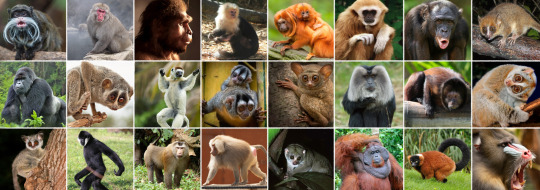
🦍The primate tournament list of candidates has been finalised! Polls will start going up soon!🦧
Thank you to everyone who submitted a species! Here is the full written list:
Basal primates (non-simian primates, including Strepsirrhini and Tarsiiformes)
†Notharctus (Notharctus tenebrosus)
Calabar angwantibo (Arctocebus calabarensis)
West African potto (Perodicticus potto)
Red slender loris (Loris tardigradus)
Bengal slow loris (Nycticebus bengalensis)
Pygmy slow loris (Xanthonycticebus pygmaeus)
Senegal bushbaby (Galago senegalensis)
Brown greater galago (Otolemur crassicaudatus)
Ring-tailed lemur (Lemur catta)
Verreaux’s sifaka (Propithecus verreauxi)
†Archaeoindris (Archaeoindris fontoynontii)
†Megaladapis (Megaladapis madagascariensis)
Madame berthe’s mouse lemur (Microcebus berthae)
Aye-aye (Daubentonia madagascariensis)
Philippine tarsier (Carlito syrichta)
Pygmy tarsier (Tarsius pumilus)
New world monkeys (Platyrrhini)
Wied’s marmoset (Callithrix kuhlii)
Goeldi’s marmoset (Callimico goeldii)
Bearded emperor tamarin (Saguinus imperator subgrisescens)
Golden-headed lion tamarin (Leontopithecus chrysomelas)
Panamanian white-faced capuchin (Cebus imitator)
Central American squirrel monkey (Saimiri oerstedii)
Gray-bellied night monkey (Aotus lemurinus)
Bald uakari (Cacajao calvus)
Madidi titi monkey (Plecturocebus aureipalatii)
Atlantic titi monkey (Callicebus personatus)
Black bearded saki (Chiropotes satanas)
White-faced saki (Pithecia pithecia)
Colombian red howler (Alouatta seniculus)
Brown spider monkey (Ateles hybridus)
Northern muriqui (Brachyteles hypoxanthus)
Yellow-tailed woolly monkey (Lagothrix flavicauda)
Old world monkeys (Cercopithecidae)
Mantled guereza (Colobus guereza)
Zanzibar red colobus (Piliocolobus kirkii)
Nepal gray langur (Semnopithecus schistaceus)
Silvery lutung (Trachypithecus cristatux)
Golden snub-nosed monkey (Rhinopithecus roxellana)
Proboscis monkey (Nasalis larvatus)
Red-shanked douc (Pygathrix nemaeus)
Collared mangabey (Cercocebus torquatus)
Japanese macaque (Macaca fuscata)
Rhesus macaque (Macaca mulatta)
Hamadryas baboon (Papio hamadryas)
Mandrill (Mandrillus sphinx)
Gelada (Theropithecus gelada)
Common patas monkey (Erythrocebus patas)
Bale mountains vervet (Chlorocebus djamdjamensis)
De brazza’s monkey (Cercopithecus neglectus)
Apes (Hominoidea)
Lar gibbon (Hylobates lar)
Pileated gibbon (Hylobates pileatus)
Kloss’s gibbon (Hylobates klossii)
Northern white-cheeked gibbon (Nomascus leucogenys)
Siamang (symphalangus syndactylus)
†Junzi (Junzi imperialis)
Bornean orangutan (Pongo pygmaeus)
†Gigantopithecus (Gigantopithecus blacki)
†Dryopithecus (Dryopithecus fontani)
Western lowland gorilla (Gorilla gorilla gorilla)
Chimpanzee (Pan troglodytes)
Bonobo (Pan paniscus)
†Australopithecus (Australopithecus afarensis)
†Panranthropus (Panranthropus boisei)
†Flores hobbit (Homo floresiensis)
†Neanderthal (Homo neanderthalensis)

The first set of polls will go up as soon as I have finished writing the descriptions! In the meantime, I would appreciate if you could share this tournament around- it won’t be much of a tournament if there aren’t that many people voting! In going down the research rabbit hole I’ve found so many interesting species and stories, and I promise learning about them here will be worth your time!
#primate bracket#tournament#tumblr tournament#poll#polls#primate#primates#extinct primates#biology#animals#zoology#please let me know if I made a mistake anywhere!
99 notes
·
View notes
Text

Hello I’m the tarsier partially running the blog for today when the grad student isn’t looking. Ask me any questions you have about Tarsiiformes…
3 notes
·
View notes
Text
🦍Markhor’s menagerie masterpost🦌
🦧Primates🐒
.
Primate kin
Colugos. Not quite primates, but I love them anyway.
.
Basal primates
Basal animals are those which are closer to the base of a particular section of the tree of life. A more traditional word for this concept is primitive. So for example, amphibians are basal land vertebrates. Here I have classified basal primates as any which are not monkeys and/or apes, including Strepsirrhini and Tarsiiformes.
Lemurs
A group of basal primates found exclusively on the island of Madagascar.
.
New world monkeys
Monkeys which are native to the “new world”, or the Americas. They are the only non-human primates found here. It is thought they arrived to the Americas tens of millions of years ago, when a group of African monkeys were blown out to sea by a storm. They survived the journey across the Atlantic on a natural raft of floating vegetation, and founded a new group of primates: Platyrrhini.
.
Old world monkeys
These are monkeys native to the “old world”: Africa and Eurasia. Also known as Cercopithecidae.
.
Apes
A group of large old world monkeys most recognisable by their lack of a tail. More formally known as Hominoidea.
Lesser apes
Consists of all the gibbon species, found in the treetops all across Southeast Asia.
Great apes
Includes orangutans, gorillas, chimpanzees, and humans. All living species of great ape have been documented using tools.
🐫Ungulates🐃
.
Odd-toed ungulates
Odd-toed ungulates, of course, have an odd number of hooves. They include horses, tapirs, rhinos, and their extinct relatives. They might actually be less closely related to even-toed ungulates than you’d think!
.
All ungulates from here on out are Even-toed ungulates:
These have an even number of hooves, and include most living hoofed mammals. Whales are technically included in this group, but they’re best left for another time.
.
Camelidae
Consists of camels, llamas, and their extinct relatives. They are often adapted for harsh climates such as deserts and mountains.
.
Pigs, hippos, & kin
This isn’t a “real” group, but I’ve put them together to make classifying extinct species simpler. This includes peccaries, pigs, hippos, and a bunch of related extinct animals. Whales are also in here, but again, are best left for another time.
.
All ungulates from here on out are Ruminants:
Ruminants are a group of even-toed ungulates with a robust digestive system to get as much nutrition as possible out of their food. They will regurgitate their food in order to chew it again, in a process called chewing the cud.
.
Chevrotains
Also known as mouse deer, these are the smallest of all ungulates.
.
Protoceratids
A strange group of extinct ungulates, once found in North America.
.
Giraffes & kin
Pronghorn antelope, okapi, giraffes, and their extinct relatives.
.
Deer & kin
Mostly deer, but I’ve included musk deer as well for simplicity’s sake. No, musk deer are not deer, apparently.
.
Bovidae
Bovidae is a group of incredibly diverse ruminants. They’re also quite complicated phylogenetically, including everything from bison and antelope to gazelles and goats.
Bovini
Cattle, bison, buffalo, and some more of their relatives.
Caprinae
A group of mountain-dwelling bovids, including sheep, goats… and markhors!
Antelope
This isn’t a “real” group as much as it is a bunch of bovids that kind of look alike. For simplicity’s sake I’ve included any bovid that isn’t in the two above groups.
4 notes
·
View notes
Text
Phylogenetic signal in primate tooth enamel proteins and its relevance for paleoproteomics
Ancient tooth enamel, and to some extent dentin and bone, contain characteristic peptides that persist for long periods of time. In particular, peptides from the enamel proteome (enamelome) have been used to reconstruct the phylogenetic relationships of fossil specimens and to estimate divergence times. However, the enamelome is based on only about 10 genes, whose protein products undergo fragmentation post mortem. Moreover, some of the enamelome genes are paralogous or may coevolve. This raises the question as to whether the enamelome provides enough information for reliable phylogenetic inference. We address these considerations on a selection of enamel-associated proteins that has been computationally predicted from genomic data from 232 primate species. We created multiple sequence alignments (MSAs) for each protein and estimated the evolutionary rate for each site and examined which sites overlap with the parts of the protein sequences that are typically isolated from fossils. Based on this, we simulated ancient data with different degrees of sequence fragmentation, followed by phylogenetic analysis. We compared these trees to a reference species tree. Up to a degree of fragmentation that is similar to that of fossil samples from 1-2 million years ago, the phylogenetic placements of most nodes at family level are consistent with the reference species tree. We found that the composition of the proteome influences the phylogenetic placement of Tarsiiformes. For the inference of molecular phylogenies based on paleoproteomic data, we recommend characterizing the evolution of the proteomes from the closest extant relatives to maximize the reliability of phylogenetic inference. http://dlvr.it/T3QZwc
0 notes
Photo

Gursky's spectral tarsier (Tarsius spectrumgurskyae)
Photo by Chien Lee
#gursky's spectral tarsier#spectral tarsier#tarsius spectrumgurskyae#tarsius#tarsiidae#tarsiiformes#haplorhini#primates#primatomorpha#euarchontoglires#boreoeutheria#eutheria#mammalia#tetrapoda#vertebrata#chordata
66 notes
·
View notes
Photo

For Indonesia’s newest tarsier, a debut a quarter century in the making
In 1993, scientists Alexandra Nietsch and Carsten Niemitz reported finding tarsiers, a type of small primate, on an island chain off eastern Indonesia’s larger Sulawesi Island.
Sulawesi’s biodiversity was little known then, and the notion that the tarsier from the Togean Islands might be a new species spurred a series of studies that looked at everything from the tarsier’s vocalizations to its DNA sequence.
Finally, in a study published this year in the annual journal Primate Conservation, that initial discovery by Nietsch and Niemitz a quarter of a century ago has been officially confirmed as a new species: Niemitz’s tarsier (Tarsius niemitzi), named in honor of the man “universally regarded as the father of tarsier field biology,” the study says.
“The biodiversity of Sulawesi is much like the biodiversity of the Galapagos Islands, made famous by Darwin’s work,” Myron Shekelle, a professor of anthropology at Western Washington University in Bellingham, WA, and the lead author of the paper describing the new species, told Mongabay in an email.
“Numerous related species were each individually adapted to the specifics of a given island,” he added. “Why would any of us choose to walk away, while species remain undescribed and questions remain unanswered?”
Shekelle was also the lead author of a 2017 report describing two new tarsier species from the northern peninsula of Sulawesi.
While newly described to science, T. niemitzi has long been known to locals by the names bunsing, tangkasi and podi. Its weight and tail length fall within the range of a number of other tarsier species, but the tarsier from the Togean Islands lacks a reduced tail tuft, which is atypical for tarsiers endemic to small islands, according to the study.
Vocalization analysis based on recordings show that its duet is structurally simple, possibly the simplest of all known tarsier duets, the paper adds.
“Togean tarsiers are unique among known tarsier acoustic forms in that they respond in playback experiments to all other tarsier duet calls by duetting themselves,” the authors write.
They also looked into the conservation status of the Niemitz’s tarsier and suggested it be classified as endangered, largely due to its isolation on the Togean Islands, cut off from the Sulawesi main island by water that goes down to depths greater than 120 meters (400 feet).
“The broader implication is that the Togean Islands possess a largely endemic biota of taxa that do not disperse easily across water barriers,” the paper says.
#Niemitz's Tarsier#Tarsius niemitzi#Tarsius#Tarsiidae#Tarsiiformes#Haplorhini#Primates#Mammalia#tarsier#biodiversity#endangered#Sulawesi#Indonesia
11 notes
·
View notes
Text
wait until i start talking about the condylar angle of michael’s legs
0 notes
Photo
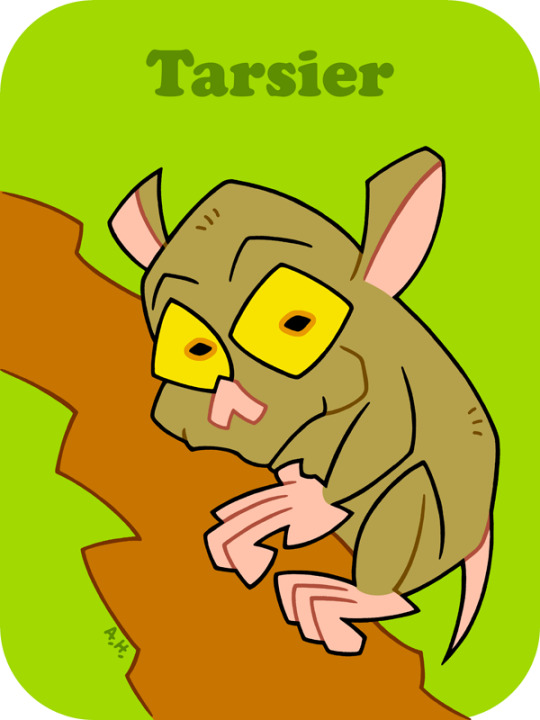
youtube
#tarsier#primate#animal#animals#animaux#green#vert#cartoon#dessin#drawing#asie#asia#tarsiiforme#tarsiidae#mamag#grands yeux#large eyes#philippines
3 notes
·
View notes
Text
Animal practice 17
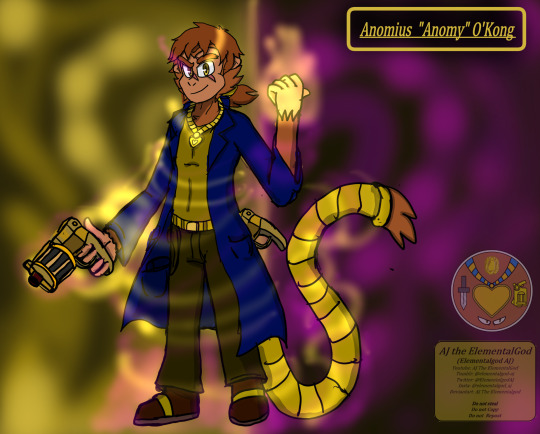

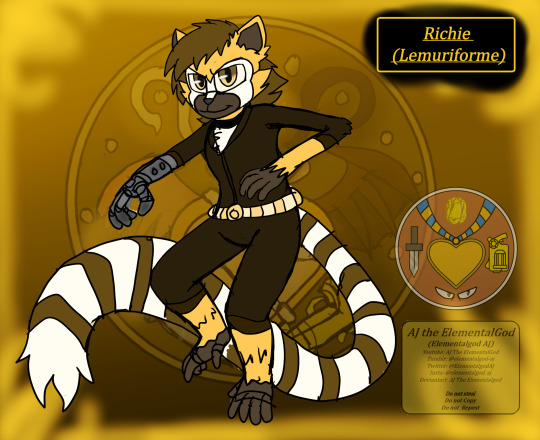


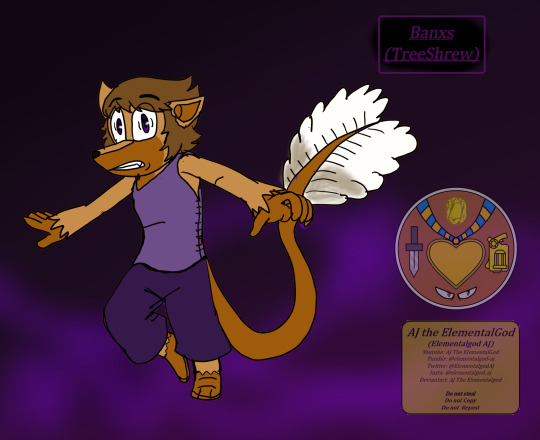
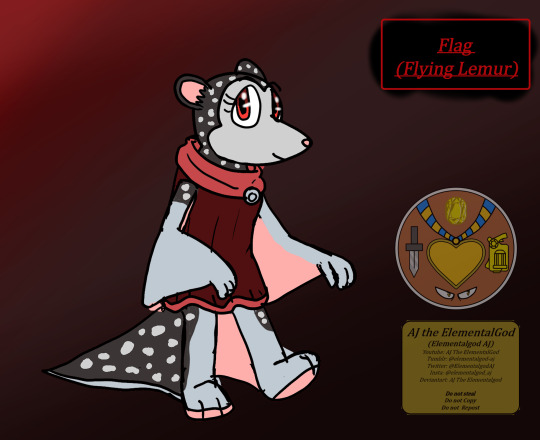
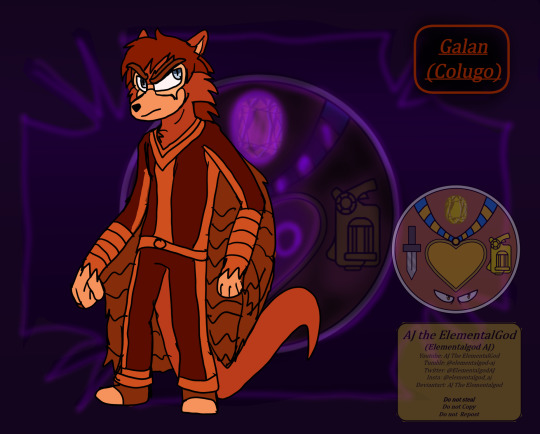
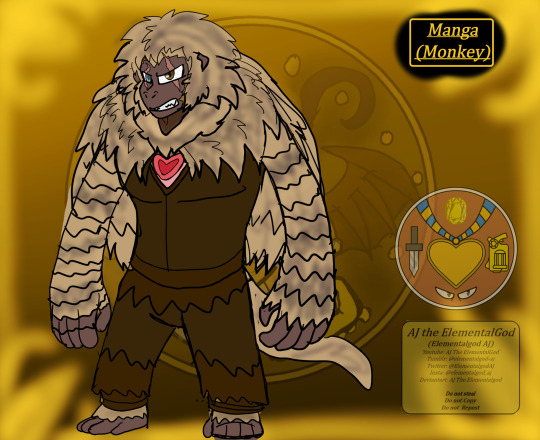
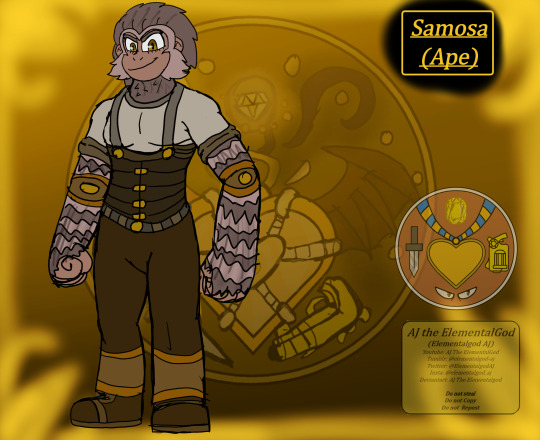
Mammal 6
Primates
Anomy (Primate)
Ina (Primate) (Oc belongs to @mabelcococups )
Richie (Lemuriforme)Lemur/Loris
Tara (Tarsiiforme)Tarsier)
Manga (Old/New world monkey)
Samosa (Ape)
Scandentia
Felicity (Treeshrew)
Banxs (pen tailed Treeshrew)
Dermoptera
Galan (Colugo)
Flag (Flying lemur)
#the watchful eye#watchful eye#my oc#my ocs#my art#elementalgod aj#aj the elementalgod#isle 0#toonverse oc#o'kong family#neo demons#anthro allies#earthdemons#anomy o'kong#primates#Monkeys#Tarsiers#treeshrew#apes#Flying lemur#Colugo#mammals
2 notes
·
View notes
Text
Just in case you weren’t already aware
the following list shows where the various monkey families (bolded) are placed in the classification of living (extant) primates
ORDER PRIMATES
Suborder Strepsirrhini: lemurs, lorises, and galagos
Suborder Haplorhini: tarsiers, monkeys, and apes
Infraorder Tarsiiformes
Infraorder Simiiformes: simians
Family Tarsiidae: tarsiers
Parvorder Platyrrhini: New World monkeys
Parvorder Catarrhini
Family Callitrichidae: marmosets and tamarins (42 species)
Family Cebidae: capuchins and squirrel monkeys (14 species)
Family Aotidae: night monkeys (11 species)
Family Pitheciidae: titis, sakis, and uakaris (41 species)
Family Atelidae: howler, spider, and woolly monkeys (24 species)
Superfamily Cercopithecoidea
Superfamily Hominoidea: apes
Family Cercopithecidae: Old World monkeys (135 species)
Family Hylobatidae: gibbons ("lesser apes") (17 species)
Family Hominidae: great apes (including humans, gorillas, chimpanzees, and orangutans) (8 species)
5 notes
·
View notes
Text

A Philippine tarsier (Carlito syrichta) a species of tarsier endemic to the Philippines.
Tarsiers belongs to the family Tarsiidae whose name is derived from its elongated "tarsus" or ankle bone. The genus Carlito is named after conservationist Carlito Pizarras.
Their eyes are disproportionately large, having the largest eye-to-body weight ratio of all mammals. Their eyes are fixed in its skull and cannot move in their sockets. Instead, a special adaptation in the neck allows its round head to be rotated 180. They use their huge eyes to hunt insects during the night.
Kingdom: Animalia
Phylum: Chordata
Class: Mammalia
Order: Primates
Suborder: Haplorhini
Infraorder: Tarsiiformes
Family: Tarsiidae
Genus: Carlito
Groves & Shekelle, 2010
Species: Carlito syrichta
Photographer: Darwin Bibar
Camera: Huawei Nova 9
Location: Leyte, Philippines
60 notes
·
View notes
Text
Here’s the format I’m using for this tournament! Inspired of course by @a-dinosaur-a-day ‘s format for Dinosaur March Madness (which if you haven’t you should definitely go over there and vote on that too!). I hope it reads well, I made it from scratch and well graphic design is not my passion…

Just a little terminology clarification. By basal primates I mean non-simian primates, including Strepsirrhini- pottos, lorises, galagos, lemurs- and Tarsiiformes. New world monkeys are any primate species native to the Americas: Platyrrhini. When I say old world monkeys, I’m excluding apes, so I’m just talking about Cercopithecidae. And apes, of course, is Hominoidea: gibbons and great apes.
And once again you can submit any living or extinct primate you’d like to see in this tournament in either the notes of this post or my askbox! It will take me a while to go through all the species of such a diverse group so submissions are very much appreciated.
Welcome to the…
🦍Tumblr Primate tournament!🦧

Inspired of course by the other wonderful science tournaments that have been going on these past few weeks. The more I learn about primates the more wonderful and diverse they turn out to be! And so I wanted to host this tournament to teach you (and me) about some of these wonderful species.
I will be polishing up this blog and setting things up over the next few days in my spare time. But I wanted to start spreading the word early so that I can…
Begin to accept submissions! 🙈🙉🙊
You can submit primate species on this post, or in my askbox. You can submit any living or extinct species as long as they are in the primate group (so no colugos unfortunately :( ). I’m sure there are some wonderful primate species I’ve never heard of and I’m excited to learn about them!
#primate bracket#tournament#showdown#primates#animals#animal facts#biology#polls#tumblr tournament#poll
21 notes
·
View notes
Note
According to my professor, the nocturnal habits of “prosimians” (her words, not mine) are a secondary response to human activity. Is this more likely than simiiforms evolving from nocturnal ancestors?
No? Not only are not all “prosimians” nocturnal (lemurs are very variable), but there are clearly nocturnal primates (e.g. omomyids) dating all the way back to the Eocene. Early fossil primates appear to have been variable in activity patterns. My guess is that nocturnal primates evolved multiple times, potentially in part to reduce competition with diurnal ones (I’m not aware of any nocturnal primates that don’t live in the same area as diurnal ones, except maybe tarsiiformes but they do their own thing ecologically)
9 notes
·
View notes
Text
This essay is kicking my ass bc I've never done an essay like this before... how am i supposed to know how to do this??? Also my midterm tomorrow gidha mvorjwhsbcnchhhh i'm gonna Die
#primates are simiiformes and anthropoidea#simiiformes is lemuriformes tarsiiformes and lorisiformes#anthropoids contain--#so on and so forth i hate it
0 notes
Photo

Monkey Primate . . Monkeys or simians are basal Haplorhini as sister of the Tarsiiformes. It consists of the Catarrhini and Platyrrhini, and other extinct groups. The Catarrhini contains the Cercopithecoidea and the Hominoidea.Wikipedia . Canon 100-400mm Manual Focus . #wildlife #nature #animals #photography #wildlifephotography #naturephotography #animal #wild #outdoors #photooftheday #picoftheday #forest #travelphotography #safari #naturelovers #wilderness #photographer #photographytips #phototutors #phototour #vkp #wp #portrait #stripes #vishalkaushikphotography #wildlifephotopedia #monkey https://www.instagram.com/p/Br8L8ZBhbGr/?utm_source=ig_tumblr_share&igshid=1oac2kaz3dlwo
#wildlife#nature#animals#photography#wildlifephotography#naturephotography#animal#wild#outdoors#photooftheday#picoftheday#forest#travelphotography#safari#naturelovers#wilderness#photographer#photographytips#phototutors#phototour#vkp#wp#portrait#stripes#vishalkaushikphotography#wildlifephotopedia#monkey
0 notes